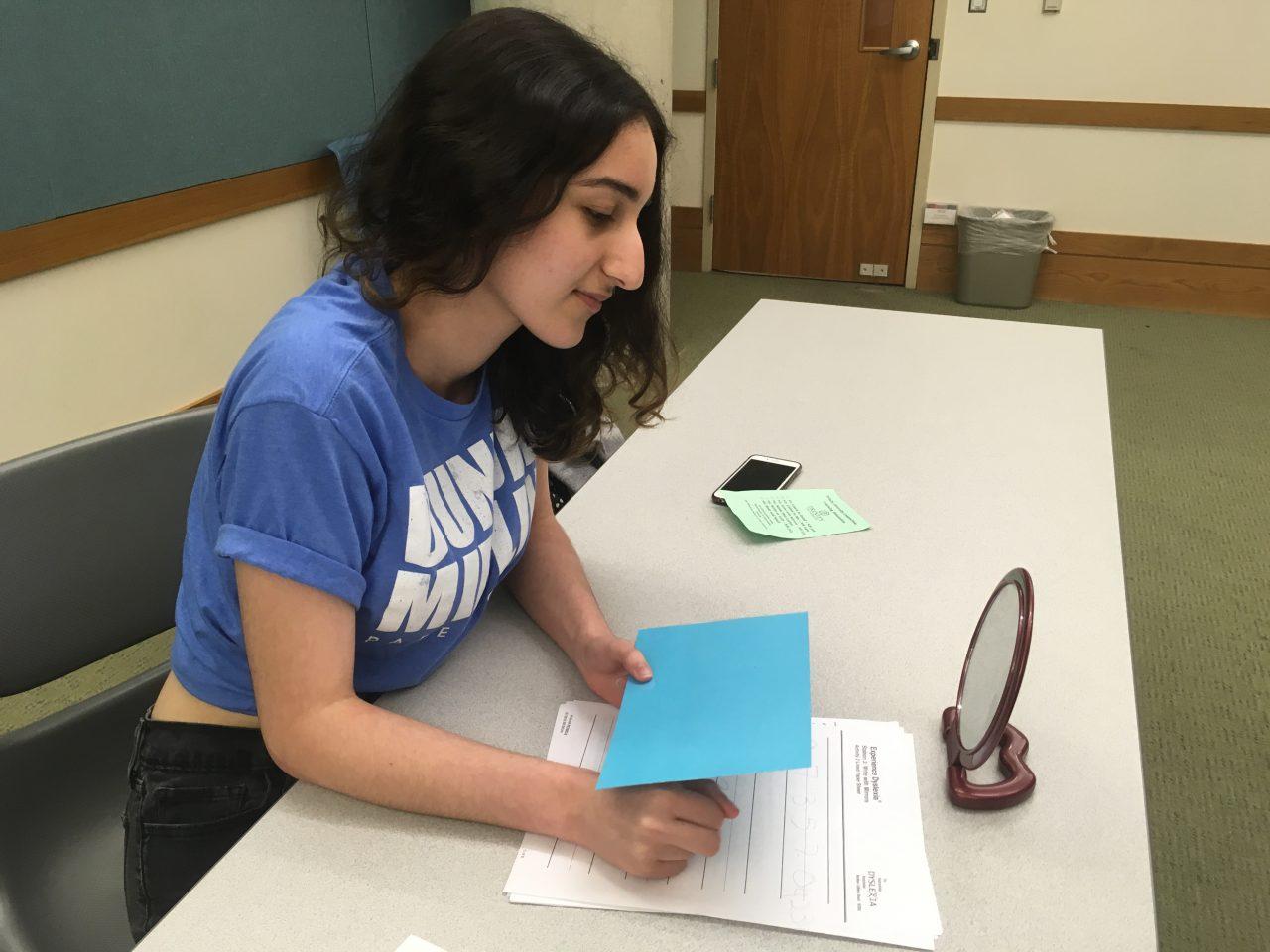Photo by Natalia Salas
“Tense,” “Frustrated” and “Angry” were all words that participants of the learning simulation shouted out when they were asked how they felt after the activities. This simulation was put on by Trinity Diversity Connection, in collaboration with TEACH, The Winston School and Trinity University’s Departments of Education and Psychology in order to raise awareness about the learning disabilities that our peers have, but that often go unnoticed.
After participating in this event, I can confirm that the activities were, in fact, tense and frustrating. The simulation was composed of five different “tests” that were designed to mimic some of the obstacles that students with learning disabilities are hindered by in their classrooms in traditional schooling. It’s important to note, however, that this was what they called “worse case scenario.” This means that some of the obstacles were taken to an extreme in order to gain sympathy from the participants.
We were first given a spelling test in which we had to write down a set of words that were, to me, incomprehensible, three different times from an audio recording. Then, we were randomly called on to read a short passage with all the letters mixed up and very blurry. When students couldn’t read the passage, the “teachers” became visibly disappointed and publicly shamed the students who couldn’t read it perfectly.
We were then separated into groups and did a rotation of rooms where there was a different test in each. The point here was to give us near-impossible tasks to complete while the people playing “bad teachers” yelled in our faces to do better. Many students were clearly frustrated with the tests and with the way they were being treated by the teachers.
This simulation did meet its goal — to raise awareness about the struggles that kids with learning disabilities face in their everyday school life. The tests were extremely anxiety inducing, even with the stakes so low.
It made me think of how hard finding motivation for schoolwork was sometimes, even without a learning disability. I thought if I were a child and this is what I went through every day of my life for years and no one made the effort to help, I would’ve lost motivation for school a long time ago.
However, there were some flaws, and arguably, controversies surrounding the simulation. First and foremost, that it’s just that — a simulation. It is impossible to claim that you know what something is like just because you went through it for 15 minutes at a time over two hours on a single day of your young adult life. Growing up and having to figure out how to navigate a learning disability without necessarily having a way to express what you’re feeling is a much different experience.
It’s also important to note that disabilities of any kind are not the same for everyone and that each person who experiences something like that will have a completely different story to tell. Every kid with a learning disability will also have varying levels of support at school and at home. Because of that, I think it’s crucial to point out that accessibility to accommodations and ways of coping with learning disabilities in general are not at all equal across the board.
Heather Haynes-Smith, assistant professor of education, explained that Texas has a history of denying kids access to special education. In fact, the Texas Education Agency (TEA) will deliberately fail to provide Free Appropriate Public Education (FAPE) to Texas students until 2020. While some parents will have the resources to provide their kids with the accommodations they need, this won’t be the case for the majority of students with learning differences who have no choice but to attend public schools.
San Antonio, for example, has a private school exclusively meant for kids with learning differences called The Winston School. While I think it’s great that the students with disabilities are given the attention they need and deserve in order to have the opportunity to excel in school, we still need to ask ourselves who it is that gets these opportunities.
According to Haynes-Smith, it’s extremely important not only to be aware of these differences, but to be willing to ask ourselves what implicit biases we have toward people with learning differences. We should all be aware that just because some disabilities aren’t physically visible doesn’t mean that they are any less worthy of our understanding and support as a community, especially in learning environments.




